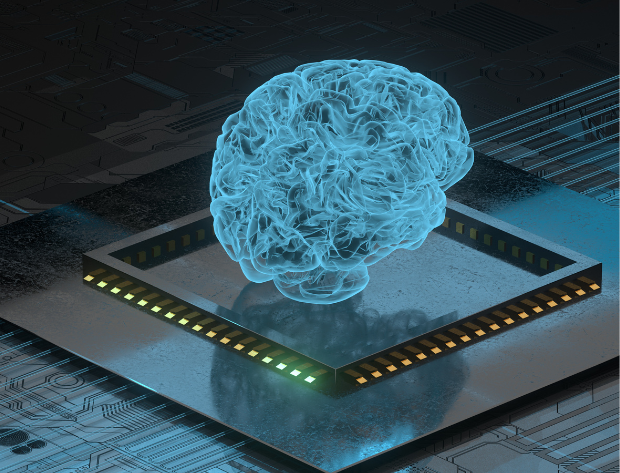Robotic process automation, in other words RPA, is a technology that imitates the repetitive, routine, high-volume work performed by an employee, whose rules can be clearly expressed, with the software we call robot. Robots, which we can also call virtual workers, perform tasks more quickly and accurately with their 24/7 working feature, taking over the routine and boring jobs of employees and providing added value to companies.

How Robotic Process Automation Works
RPA technology can be easily integrated with existing IT systems of companies without the need for any infrastructure changes. At the same time, thanks to the feature of developing processes with Low code logic through the user-friendly interface of this technology, companies can automate their processes in a very short time and enable their employees to allocate more time to jobs with higher added value.
How RPA Works
RPA technology; It consists of three main components: the “Developer environment” where the processes are developed, “Robots” where the developed processes work at the scheduled times, and the “Management Panel” where the robots are supervised.
The developer environment is the environment where all the steps of the process performed by an employee are introduced to the robots. This environment has Low Code architecture. In this way, processes can be developed in a short time by drag and drop method in this environment, developed processes can be rearranged, tested, error management can be made and processes can be published to work on robots.
Robots are the environment in which the developed processes are run at the scheduled time. There are two types of robots, Attended and Unattended, according to their intended use. Participatory Robots are automation based on human-robot collaboration that can be run at any time by the user. Unattended Robot is automation that can work regularly on a predetermined schedule without any user intervention.
The Administration Panel is the environment where the robots are configured, the runtimes of the processes are planned from the developer environment, the running processes and robots are monitored, and the user management is done.
How to Make an RPA Roadmap?
Process automation with RPA (Robotic Process Automation) is a part of companies' digital transformation journey. Therefore, it is important to create a process automation roadmap with RPA. The steps of the RPA roadmap can be listed as follows:
● RPA Awareness Meetings: These are general information meetings about what RPA technology is and what kind of processes can be automated with RPA technology for employees from all levels in companies.
● RPA PoC: A step in developing an exemplary process chosen to demonstrate how RPA technology works and its core capabilities and utility.
● Hackhaton: It is the workshop where the departments in the company participate and candidate processes that can be developed with RPA technology are revealed.
● Hackhaton: It is the workshop where the departments in the company participate and candidate processes that can be developed with RPA technology are revealed.
● RPA Process Evaluation: It is the stage where the RPA compliance of the candidate processes is evaluated, and the appropriate processes are planned.
● RPA Process Development: It is the stage where the planned processes are analyzed and developed in detail, user acceptance tests (UAT) are made, and the processes are brought live (published).
● RPA Live Support: It is the stage where the processes taken to the live are monitored and whether the targets are reached or not.
Where is Robotic Process Automation Used?
Our virtual colleagues, robots, can imitate almost all the operations of an employee with a computer with high speed and accuracy. Basically, we can automate processes including the following operations with our virtual colleagues:
● Folder creation, copying, all file operations locally or on the server
● Getting data from Excel, Pdf and text files, manipulating data, creating new file and writing to file etc. transactions
● Reading e-mail, downloading and sending attachments
● File transfer operations with FTP
● Login to Web or Desktop applications and import/enter data
● Web service integration
● Connecting to the database, importing and writing data
● Ability to collect social media statistics
RPA can be applied to many industries such as finance, healthcare, automotive, logistics, human resources, energy, retail, manufacturing. For comprehensive information, you can take a look at our RPA usage areas article.
What Does an RPA Specialist Do?
The main role of RPA (Robotic Process Automation) specialists is to design, develop, go live and monitor whether the process is working as expected after the go-live, using various RPA tools.
What Are the Benefits of RPA?
The advantages of RPA solutions are;
●Increased Operational Efficiency: RPA robots reduce operational workload by automating repetitive and manual processes.
●Error-Free Processes: RPA robots can process with higher accuracy than manual processes, minimizing the risk of errors and improving output quality.
●Ease of Integration with IT Systems: RPA robots work in integration with all IT systems without changing existing systems, without the need for infrastructure changes.
●Cost savings: Automating manual and repetitive processes with RPA reduces labor costs and eliminates the need for additional software licenses and hardware.
●Cost savings: Automating manual and repetitive processes with RPA reduces labor costs and eliminates the need for additional software licenses and hardware.
●Increased Customer Satisfaction: Automating customer service processes with RPA can lead to faster response times and improved customer experiences.
●Increased Employee Satisfaction: Automating manual and repetitive processes allows employees to focus on more strategic and interesting tasks, increasing job satisfaction and reducing attrition.
●Integration with other Intelligent Automation technologies: When technologies such as artificial intelligence and Rpa technology are integrated, it allows robots to work in situations that require human interpretation.
To learn more about Robotic Process Optimization, you can check out our What is RPA blog post.












